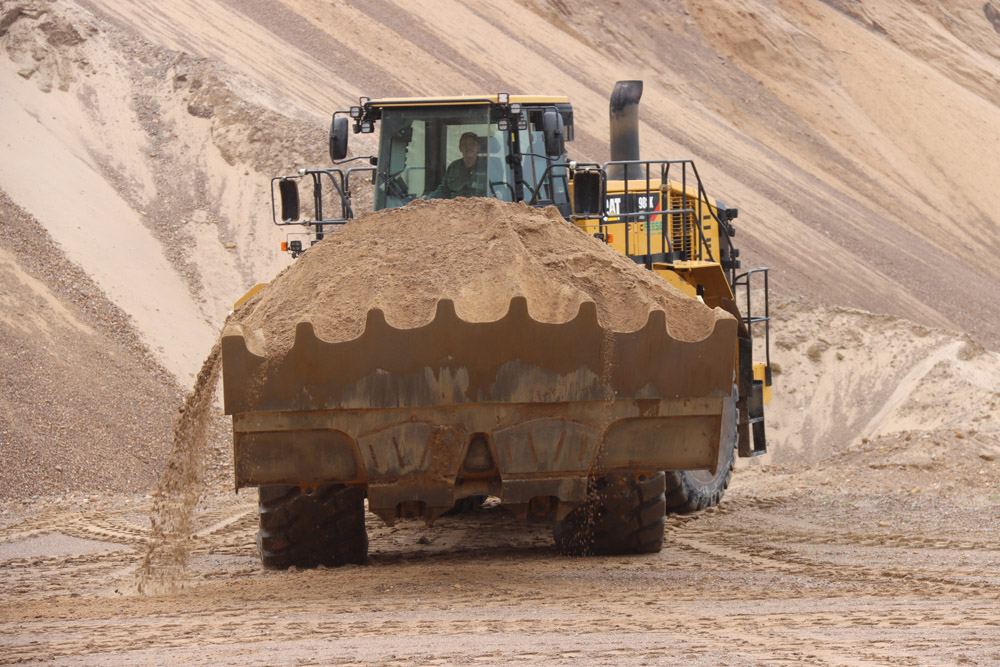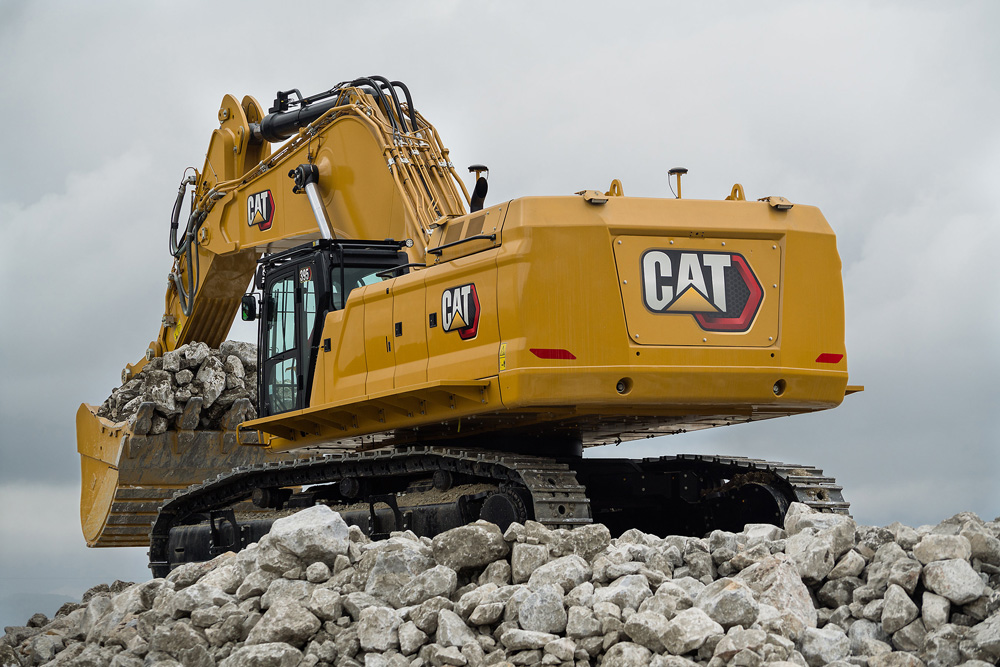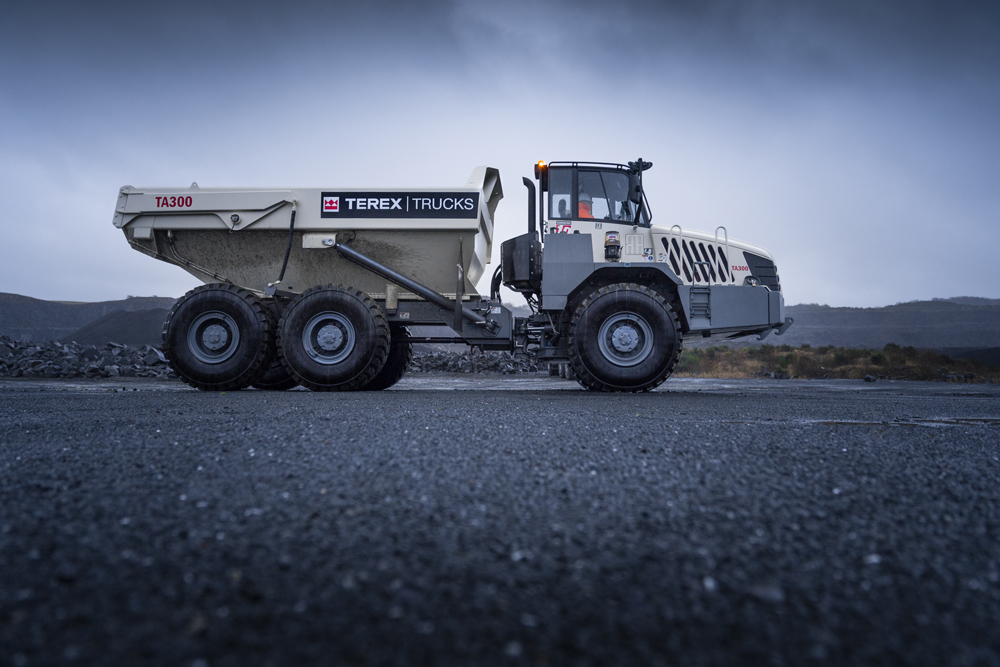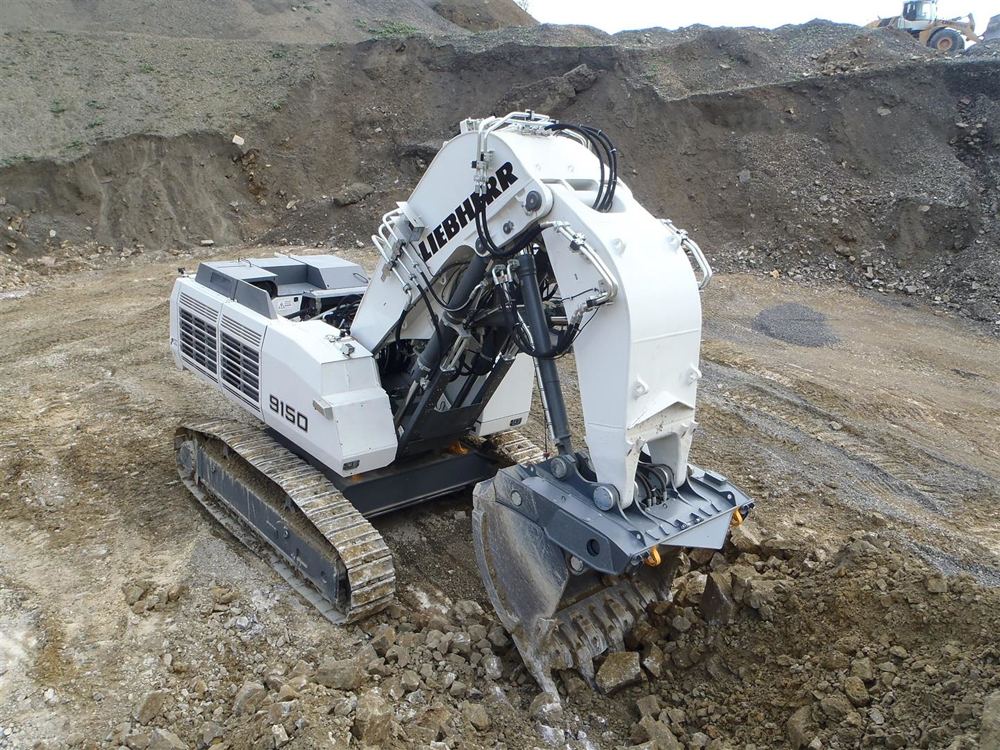
MIRO, Germany’s aggregates federation, states that the construction industry once again proved to be a pillar of the overall German economy in 2020, “excellently” standing up to the myriad challenges associated with COVID-19-pandemic disruption.
As the association highlights, Germany’s Federal Statistical Office reported that construction sector companies increased their combined revenues by 6.6% in 2020.
Walter Nelles, vice general secretary of MIRO, said: “Of course, the aggregates industry in Germany also benefited from this situation. Thanks to a strong fourth quarter, while production was predicted to increase by almost 2% in full-year 2020, initial estimates assume an increase in sales of 4%-5%.

“While the prospects for 2021 do not suggest a collapse in construction sector demand, the coronavirus situation and declines in investment mean that no major leaps are expected. Differentiated according to the economic sectors, the order books in the building construction sector seem to be full, while commercial construction suggests a slight decline. This development will also have an impact on the rock industry. Should the decline in public demand for road construction intensify, a slight decrease in total aggregates production is to be expected at the end of the year, with sales remaining the same.”
Discussions around improving the utilisation of recycled German construction waste have intensified, notes Nelles. Although almost all national construction waste is recycled and reused, the amount of aggregate available from it is limited. “This share has so far only made up 12.5% of the total aggregate demand in Germany,” explains Nelles. “The German construction industry and others still need large quantities of primary raw materials such as gravel, sand and natural stone.”
MIRO president Dr. Gerd Hagenguth explained at the beginning of 2021 that the construction value chain begins with the stone products – gravel, sand, and natural stone. As a result, care must be taken to ensure that the extraction of mineral raw materials in Germany is not hindered any further and that planning and approval procedures do not remain obstacles. MIRO also states that the backlog of applications for crushed rock, sand and gravel extraction permits that have piled up for years must now be addressed.
In 2021, Germany’s construction industry continues to need, among other things, large quantities of aggregates for a wide variety of major and small- to medium-sized building works. Crucial to this, notes MIRO, is the smooth supply of primary raw materials: gravel/sand and crushed rock - of which 259 million tonnes and 217 million tonnes, respectively, were produced in 2019.
MIRO stresses that import and export quantities must also be considered when analysing German aggregates market buoyancy. In 2019, imports of gravel/sand amounted to around 3.9 million tonnes, and around 6.5 million tonnes of natural stone were also imported. Exports of gravel/sand were around 12.5 million tonnes, with a further 6.5 million tonnes of crushed rock exported.
MIRO notes that in addition to the primary raw materials, there are not inconsiderable amounts of secondary raw materials every year (recycling building materials and industrial by-products), which, taken together, are vital to quantifying German aggregates demand.
The Construction Circular Economic Initiative’s monitoring reports, based on the database of official statistics and enjoying a very high level of acceptance by all stakeholders, show that material cycles were almost completely closed for 2018, the last survey year. The accumulation of mineral waste from the construction sector and road excavation fractions totalled 74.7 million tonnes in 2018. From this, 59.7 million tonnes of recycled building materials were produced. This corresponds to a recycling rate of almost 80%.
Additionally, a further 13.3 million tonnes of recycled aggregates were generated from processing soil and stones, while another 300,000 tonnes of recycled aggregates came from processing construction site waste. This means a total of 73.3 million tonnes of recycled building materials was produced in Germany in 2018 – equating to a 12.5% share of all national aggregates production that year.
Of the 73.3 million tonnes of recycled building materials made in Germany in 2018, 37.6 million tonnes (51.3%) were used in road construction, 16.3 million tonnes (22.2%) in earthworks and 3.6 million tonnes (4.9%) were utilised in other applications, predominantly in landfill construction. The remaining 15.8 million tonnes (21.6%) were used as aggregates in asphalt and concrete production.
A new report by GlobalData, a leading international business market intelligence consultancy, supports MIRO’s upbeat German market take, stating that the country’s construction industry fared relatively well compared to its peers in Western Europe during COVID-19-hit 2020.
Although the industry’s value-add in real terms contracted by 2.6% year on year (YoY) in Q3 2020, it was preceded by a YoY growth of 2.7% in Q2 and 7% in Q1 2020; this helped the industry to register a cumulative growth of 2% YoY during the first nine months of 2020.
Published in February 2021, GlobalData: Construction in Germany – Key Trends and Opportunities to 2025 also notes that

German construction activities held up relatively well in the first three quarters of 2020, as the construction sector was exempted from lockdown restrictions imposed that year.
Although the residential sector registered growth during this period, the commercial sector witnessed lower levels of activity. In 2021, the construction industry’s output growth is expected to pick up, driven by the government’s focus on the development of the country’s transport and energy infrastructure.
GlobalData expects the German construction industry to grow by 2.8% in 2021 and rise at a rate of 2.3% between 2022 and 2025. Growth in the industry will, says GlobalData, be supported by the government’s focus on improving regional connectivity by developing the country’s rail and road transport infrastructure, coupled with efforts to boost energy production. The construction of the Fehmarn Belt underwater tunnel between Germany and Denmark, which is worth €7 billion, will underpin activity in the medium term’s transport infrastructure sector. Growth will also be supported by the 10-year plan to invest €86bn in the maintenance and modernisation of the country’s rail network between 2020 and 2030.
Metso Outotec recently stressed the importance of the German aggregates production unit market. Speaking at the 17 March 2021 launch of Nordtrack Liveroom, Metso Outotec’s 360° digital event experience platform, and the unveiling of the new Nordtrack S2.5 mobile screen and the Nordtrack I908 mobile impact crusher, Adrian Wood, Metso Outotec head of Aggregates Equipment Distribution, said: “Germany is a market that is a perfect fit with the Nordtrack range, and its rental business has boomed during the coronavirus pandemic.”
U.S. giant Caterpillar and Zeppelin Baumaschinen, the company’s dealer in Germany, have a long and successful trading history in the German off-highway equipment sector.
“The demand for aggregates in Germany is trending upwards,” says Staale Hansen, manager for Large Machines, Paving and System Solutions at Zeppelin Baumaschinen (Zeppelin). “With state-of-the-art technology, German customers appreciate the choice and reliability of the Cat equipment. The key drivers are the lower costs per tonne of the equipment and the support we offer to keep the machines working longer through preventive maintenance.”
Hansen thinks ecological trends, like the German CO2 tax and the subsidy programme, are great opportunities and offer technology solutions for significant fuel & CO2 savings through the 988K XE large wheeled loader with electric drive transmission. Hansen says the Cat Certified Rebuild programme, which returns an end-of-life machine or component to a like-new condition, also offers a lot of benefits for customers and the environment.
“The trend towards outsourcing includes maintenance and repair work. We are experiencing a growing interest from our customers for service contracts which Zeppelin has been offering for years. Full-service contracts for prime production equipment are also popular because they offer peace of mind and maximum machine uptime.”
Hansen says that popular quarrying models in Germany include the Cat 775G off-highway truck and the Cat 988K XE large wheeled loader. “Customers like low fuel consumption and high efficiency. The 988K XE offers up to 25% better fuel efficiency than models with a conventional powertrain,” he explains.
Hansen continues: “There has been an interest in autonomous solutions in the construction industry for some time. Caterpillar has decades of experience with autonomous solutions in the mining business.
“Customers have experienced improved safety, better efficiency, greater productivity, and lower costs. Now, Cat Command is making its way into the construction industry. Cat Command solution is structured as a series of building blocks leading to semi-autonomous operation. The solution is scalable and incremental, allowing customers to enter at whatever level of technology and infrastructure they choose, ranging from line-of-sight (LOS) to non-line-of-sight (NLOS) remote control solutions as well as semi-autonomous solutions.
“Currently, we offer Cat Command for loading with the 988K large wheel loader with a line-of-sight console and Cat Command for dozing with line-of-sight console or operation from a remote station.”
Hansen also notes that German construction and quarrying companies are keen to reduce their CO2 footprint while also striving to instil higher efficiency in their operations.
Terex Trucks has a strong presence in the German off-highway articulated dump trump (ADT) market.
Speaking to Aggregates Business Europe about market demand, Guy Wilson, the Motherwell, Scotland-headquartered company’s global sales director, says: “In 2019, a total of 259 articulated haulers were sold in Germany (from 25- to 60-tonne-capacity ADTs). Due to the pandemic, truck sales dropped to 142 last year. We expect the demand to pick up in 2021, but it’s difficult to predict what the rest of the year will look like exactly.
“We’re seeing opportunities in the German market, even though so far, the government hasn’t committed to any big infrastructure projects to kick-start the economy. This is in contrast to the U.S. and the UK, where the High Speed 2 (HS2) railway project will be one of the most important economic regeneration projects in Britain for the next few years.
“That being said, there are lots of homebuilding projects in northern and central Germany, which is one of the main areas for land development since living space is scarce in many other areas in the country. Deutsche Bahn will also invest several billion euros over the next few years, and an expansion to the existing rail network could drive demand for haulers in the German market.
“Over the last few years, we’ve also seen a slow recovery of gravel pits and quarries throughout Germany. Many quarries in the south had to close down or reduced their production levels to a minimum three to four years ago, but we’re now seeing that demand is slowly increasing again. This could be another good sign for articulated hauler demand in Germany.”
Wilson says that in Germany, machine rental is dominating and accounts for around 70% of the articulated hauler market. Given the pandemic, he believes this trend could further increase, especially if companies remain wary of making big investments in new machinery amid challenging times.
“Very often, contractors simply find it easier to rent haulers for a project in a certain area, and after completion, they move on to their next job in a different region within Germany and rent new equipment.
“This means rented construction machinery needs to be especially durable, which is what our Terex Trucks haulers are renowned for. Our robust and reliable dump trucks are built to excel in the toughest conditions and ensure maximum uptime for customers.”
Wilson highlights that Terex Trucks’ TA300 makes up over 80% of the Terex Trucks dump trucks in the German market. Bringing the 28-tonne TA300 to a new jobsite is easy as the hauler can be transported on German roads without a special permit.
“We’ve recently launched our new Stage V TA300, and TA400 articulated haulers, which means customers in Germany can benefit from a reduction of up to 7% in fuel consumption when compared to the Stage IV engine. The haulers now also deliver an even stronger engine performance and excellent responsive power in all conditions. Equipped with a Variable Geometry Turbo (VGT), the new Stage V engine allows faster response at all engine speeds and an efficient combustion performance. All of this helps improve operators’ efficiency while keeping the total cost of ownership low.”

German construction, quarrying and mining equipment manufacturer Liebherr is one of the biggest equipment makers globally, with Germany, naturally, a huge market within its European business.
“The German equipment market is a very special one,” says Otmar Wehrle, sales director, Liebherr-Mining Equipment. “An average high-cost level paired with high environmental awareness has led to the abandonment of the big coal mines. The huge bucket wheeled excavators are almost all mothballed, replaced by smaller and more agile 100-tonne class hydraulic excavators.”
Wehrle says that limestone is the biggest quarried material in Germany, with some sites major suppliers of mineral products to the national concrete sector. “Average operation working hours are seldom more than 1,200 hours per year, while in other parts of the world it is rather 6,000 hours per year,” he explains.
“Due to the high hourly cost for personnel in Germany, [quarrying and mining] production must be done in the shortest time possible.
“Machinery and blasting noise and vibration can also become big concerns, giving the customer no other choice than quitting or investing in specialist equipment with noise kit and direct digging capacities. Then bigger machines come into play.”
Focusing on current popular Liebherr models for German quarrying and mining customers, Wehrle says: “The R 9100 and R 9150 excavators are the mining machines for Germany, with their in-face shovel and often with à la carte buckets.
“These machines are the answer to the high-level requests of the German customers when it comes to safety, production and availability. These machines do not yet have the size of the typical mining machines with 250+ tonnes of mass.
“The latest addition is the R 9150 with electric drive, providing the ultimate answer to a high environmental consciousness coupled with extremely low OPEX [operating expense].”
The robustness of German building material and material processing equipment demand during the coronavirus pandemic and the continuing German government commitment to major infrastructure spending are also encouraging signs ahead of the 4-10 April 2022 staging of the bauma, Munich exhibition, the world’s biggest construction, quarrying and mining equipment trade fair.
‘What does the future hold for the construction machinery industry?’ is a key theme of the event. In Germany’s case, at least, the industry’s future will be built on firm foundations.








